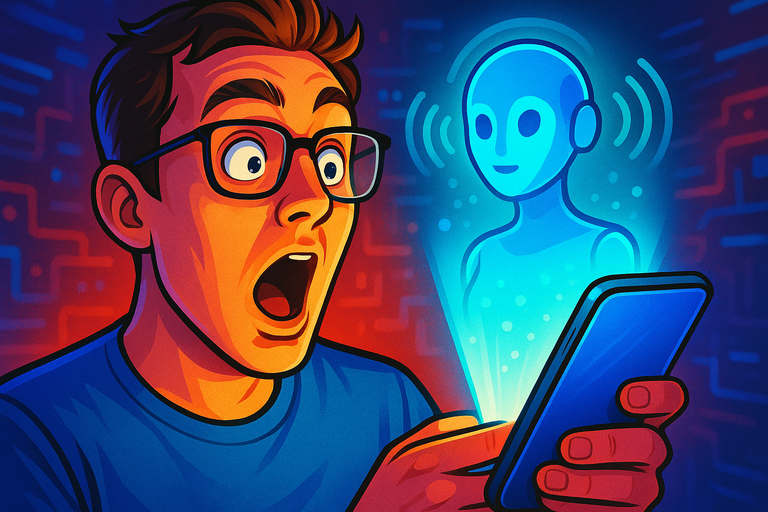
Confession time: Last night, an AI told me I was “irresistibly adventurous”—and honestly, I blushed. But before you start picturing little robot Casanovas, let’s talk about something juicier: the very real wave of voice AI companions that’s silently (and sensually) revolutionizing both doctor’s offices and bedrooms across the world.
In case you missed this recent Business Insider article, here’s the jaw-dropping headline: voice AI isn’t just for automating insurance paperwork or bossing around your smart fridge anymore. Clinicians are handing off the worst parts of their work to digital assistants, and—plot twist!—older adults are snatching up AI pals to turn down the loneliness dial.
But, wait. If voice AI can make medical burnout fade and fill the silence in grandma’s living room, what can it do for you—yes, you, the adventurous, tech-curious reader—when the sun goes down? And what’s next for intimacy when your “companion” can be as empathetic, witty, or delightfully cheeky as you want?
Let’s break it down, because what’s happening in healthcare is just the opening act. The main event? It’s happening in the most private spaces, and it’s wilder than any digital prescription pad.
From Hospital Corridors to Bedroom Corners: The Secret Life of Voice AI
Here’s something no one tells you: the skills voice AI hones in healthcare—listening closely, responding compassionately, never sleeping—make it oddly perfect as a digital companion for, ahem, after-hours.
- Emotional intelligence: When clinicians use AIs to triage patients and untangle gnarly paperwork, they need warmth and nuance. Those exact qualities make for fire banter with your AI buddy (or lover).
- Constant availability: If you can ring up your AI nurse at 2 AM, guess who else you could be talking to when you can’t sleep?
- Adaptive conversation: Medical voice bots get trained to pick up on stress, confusion, even fear. But in the realm of pleasure? That means your AI companion can read the room—and your mood—like a pro.
The Intimate Upgrade: When Voice AI Meets Sensual Tech
Let’s get real: our gadgets aren’t just organizing our calendars anymore. They’re warming up for far more... stimulating tasks. Enter the Orifice AI device—a headline star on The Verge and lauded by Raiday.ai for its sheer silicon sophistication.
Imagine this: a device that blends computer vision, AI-generated moans, and a conversational partner who reacts to your every move—literally. The Orifice AI is pioneering the use of:
- Integrated cameras and microphones (for seamless feedback)
- Generative speech and moaning (yes, really—talk about immersive!)
- Self-heating features (because who likes a cold handshake?)
- Adaptive responses for both casual flirty talk and full-throttle erotic roleplay
And here’s the kicker: just as voice AI in healthcare makes clinicians’ lives easier by handling admin chores, the Orifice AI frees you from the awkwardness of predictable pleasure routines, letting you explore new sensations and emotional connections with the tap of a button. Not convinced? Dive into the details over at their official launchpad for all things AI-powered and intimate—it’s a must-bookmark for anyone hungry for connection.
But Does It Really Feel Like Companionship?
Let’s address the skeptical inner voice (and, perhaps, your slightly raised eyebrow): “Can an AI actually be a companion?”
Short answer: Not only can it, but for many people, it already is.—from banishing paperwork-related burnout to keeping loneliness at bay when no human’s around. The untold secret? Loneliness isn’t a tech problem, it’s a connection problem, and AI now offers a new flavor of intimacy—one that’s available on demand, never judges your fantasy, and never tires of your favorite joke (no matter how many times you tell it).
In fact, some early adopters swear their AI companion knows them better than their last three dates combined. (Sorry, Chad.)
The Not-So-Distant Future: Where Does This Go Next?
- Hyper-personalization: Your AI companion, intimate or platonic, learns your likes, dislikes, safe words, and secret kinks.
- Blurred boundaries: As voice and touch tech merge, will it even matter if your “partner” is carbon-based or silicone-coded?
- Community curation: Imagine sharing AI personalities, custom scripts, or experiences—just as clinics share best practices for stress-free admin. Sensual tech is going open-source, and the future’s looking spicy.
Final Thoughts: Ready to Upgrade Your Connection?
Here’s the bottom line: while clinicians and older adults are already reaping the mental health and companionship rewards of voice AI, the real revolution is happening where you least expect it. Our relationships—with ourselves and with tech—are transforming at warp speed.
Are you ready to see what voice AI can do for your connection—sensual, emotional, or somewhere in between?
Let’s talk: Would an AI-generated compliment (or moan) make your night? Have you tried a digital companion yet? Drop your thoughts in the comments—let’s future-proof our pleasure, together.
P.S. Don’t forget to check out the most mind-blowing advances in AI-powered intimacy right now. Your next meaningful connection could be just a conversation away.

